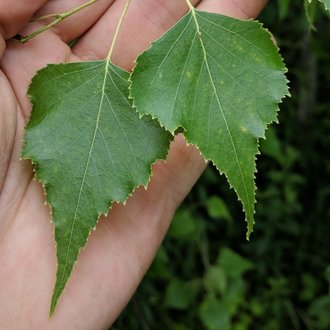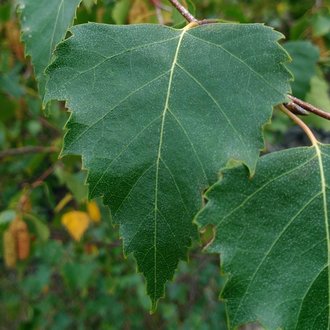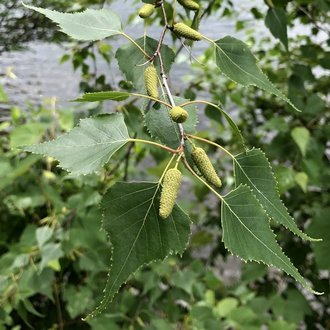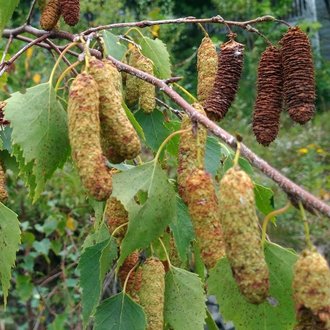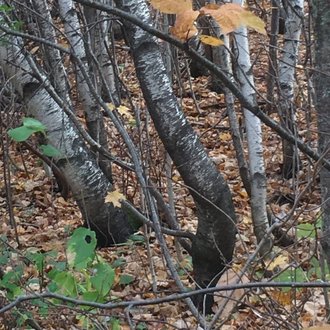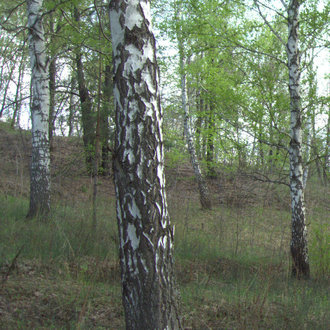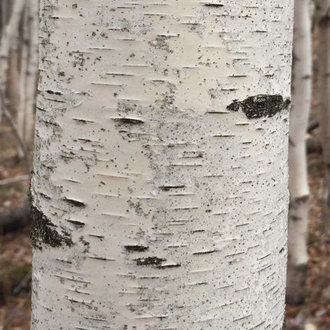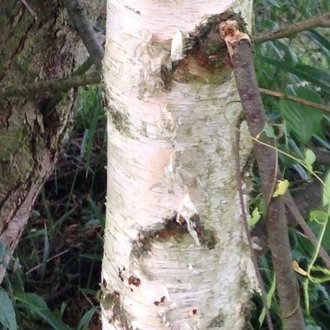Gray Birch vs European White Birch
These two species are often confused where their ranges overlap, as both have white bark that does not peel excessively, and both have doubly-serrate triangular leaves. Gray birch is common in the wild and occasionally used in landscaping; European white birch is common in landscaping and occasionally escapes into the wild. These species can usually be easily distinguished by differences in bark, catkins, leaf shape, and growth habit. However, both species can hybridize with other, similar-looking birches, complicating ID.
Gray Birch (Betula populifolia) | European White Birch (Betula pendula) |
A fast-growing, short-lived tree native to northeastern North America; mostly a pioneer species. | Native to Europe and Asia, with a wide distribution. Widely planted in North America as a landscaping plant, and established in the wild at numerous isolated sites in the colder regions of the continent, mostly northerly areas and at high elevations. |
Leaves long-acuminate, the tips tapering to a long point. Photo © Nate Martineau, CC BY 4.0. | Leaves pointed, but not long-acuminate, i.e. the point is not elongated, and the tip of each leaf looks more triangular. Photo © Ben Armstrong, CC BY 4.0. |
Staminate aments (female catkins and seed cones) average much smaller. Photo © Nova Patch, CC BY-SA 4.0. | Staminate aments (female catkins and seed cones) average much larger. Photo © Ben Armstrong, CC BY 4.0. |
Base of mature trees is often dark, but is smoother and lacks vertical cracks and furrows. Photo © Charlie Hohn, CC BY 4.0. | Mature trees have vertical cracks in the bark lower down on the tree, turning into a dark, furrowed bark at the base of the trunk. Photo © Andrey Korobkov, Public Domain. |
Bark does not peel. Bark is often white, but less bright and often dirtier looking, with numerous flecks and grayish splotches. Photo © Patrick Leary, CC BY 4.0. | Bark of trees of moderate age, or bark higher up on the tree, bright white, sometimes peeling slightly in narrow strips. Photo © mangoblatt, Public Domain. |
References & External Resources
These short lists show only links helpful for ID. For a complete list of references and resources also covering other aspects of ecology, visit the links section of the full article on each plant, which is the first entry here.



